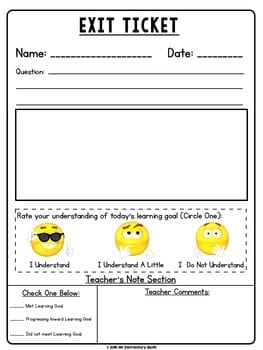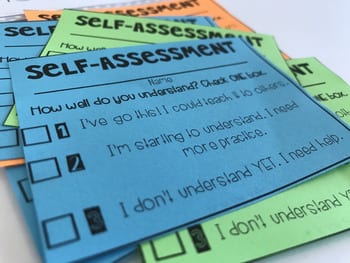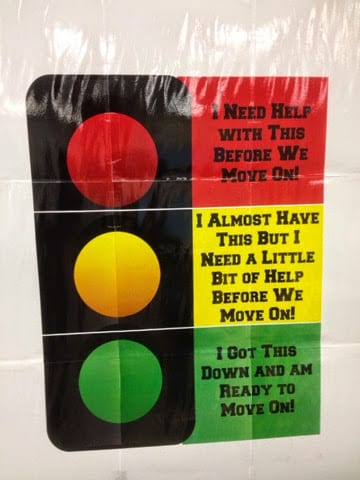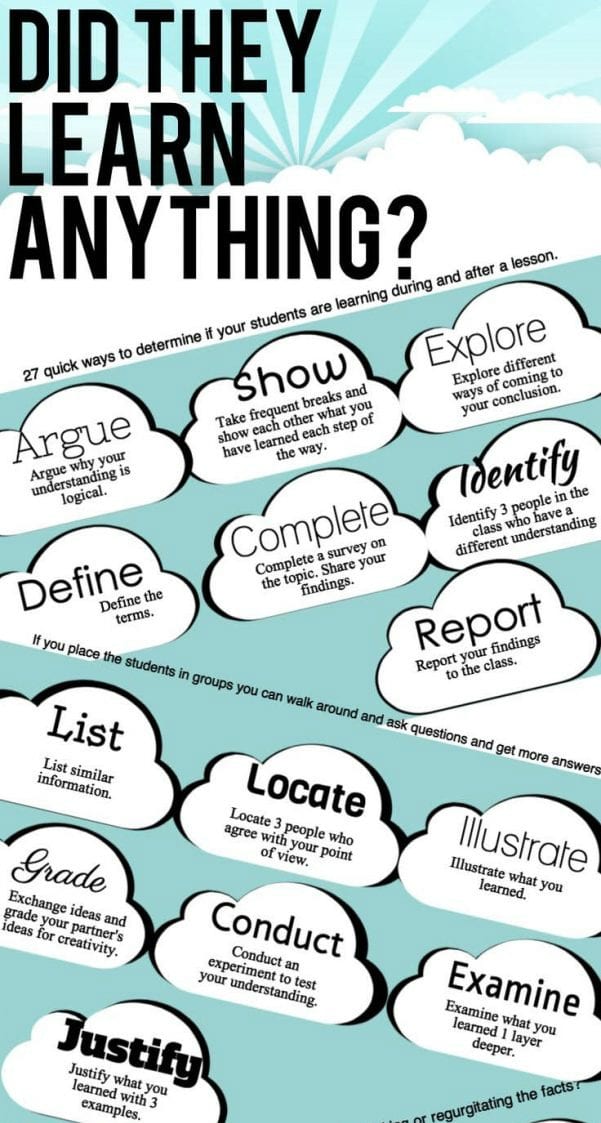The ultimate goal of teaching is to do just that – teach, not stand up in the front of the room and talk. But sometimes it’s easier to talk than to teach, as we all know, especially when we need to cover a lot of material in a short amount of time. We hope students will understand, if not now then before test time, and we keep our fingers crossed that their results will indicate we’ve done our job.
The problem is, we rely on these tests to measure understanding, and then we move on. Few of us take the time to address weaknesses and misunderstandings after the tests have been graded, and by that time it’s too late for students to be interested. This means we need to rethink how we approach assessment during class.
The most effective way to test student understanding is to do it while the lesson’s still going on. Asking students to fill out a questionnaire and then correcting misunderstandings during the next class period won’t work because students have already moved on. You’ve got to take advantage of the moment. If you hope to spend the majority of your time getting through to students, and not just talking, then understanding must be measured and dealt with as soon as the first frown appears on a face.
Here are a few in-class tips to get you started:
Give them a Yes/No question.
Check for understanding by asking students to flash a red piece of construction paper for no (they need a little more explanation) or a green piece of construction paper for yes (they get it and are ready to move on). Alternatively, laminate squares of red and green construction paper and glue them back to back to large popsicle sticks to make paddles for your students to show. So, of course, it’s surprising when several students later admit that they’re lost. To help students grasp ideas in class, ask pointed questions that require students to use their own prior knowledge.
Ask students to reflect.
During the last five minutes of class ask students to reflect on the lesson and write down what they’ve learned. Then, ask them to consider how they would apply this concept or skill in a practical setting.
Use quizzes.
Give a short quiz at the end of class to check for comprehension.
Ask students to summarize.
Have students summarize or paraphrase important concepts and lessons. This can be done orally, visually, or otherwise.
Hand signals.
Hand signals can be used to rate or indicate students’ understanding of content. Students can show anywhere from five fingers to signal maximum understanding to one finger to signal minimal understanding. This strategy requires engagement by all students and allows the teacher to check for understanding within a large group.
Response cards.
Index cards, signs, whiteboards, magnetic boards, or other items are simultaneously held up by all students in class to indicate their response to a question or problem presented by the teacher. Using response devices, the teacher can easily note the responses of individual students while teaching the whole group.
Four corners.
A quick and easy snapshot of student understanding, Four Corners provides an opportunity for student movement while permitting the teacher to monitor and assess understanding. The teacher poses a question or makes a statement. Students then move to the appropriate corner of the classroom to indicate their response to the prompt. For example, the corner choices might include “I strongly agree,” “I strongly disagree,” “I agree somewhat,” and “I’m not sure.”
Think-pair-share.
Students take a few minutes to think about the question or prompt. Next, they pair with a designated partner to compare thoughts before sharing with the whole class.
Choral reading.
Students mark text to identify a particular concept and chime in, reading the marked text aloud in unison with the teacher. This strategy helps students develop fluency; differentiate between the reading of statements and questions; and practice phrasing, pacing, and reading dialogue.
One question quiz.
Ask a single focused question with a specific goal that can be answered within a minute or two. You can quickly scan the written responses to assess student understanding.
Socratic seminar.
Students ask questions of one another about an essential question, topic, or selected text. The questions initiate a conversation that continues with a series of responses and additional questions. Students learn to formulate questions that address issues to facilitate their own discussion and arrive at a new understanding.
3-2-1.
Students consider what they have learned by responding to the following prompt at the end of the lesson: 3) things they learned from your lesson; 2) things they want to know more about; and 1) questions they have. The prompt stimulates student reflection on the lesson and helps to process the learning.
Ticket out the door.
Students write in response to a specific prompt for a short period of time. Teachers collect their responses as a “ticket out the door” to check for students’ understanding of a concept taught. This exercise quickly generates multiple ideas that could be turned into longer pieces of writing at a later time.


Download this cute freebie to create these exit tickets. Students can write the question of the day at the top and turn in their responses on the way out.
Journal reflections.
Students write their reflections on a lesson, such as what they learned, what caused them difficulty, strategies they found helpful, or other lesson-related topics. Students can reflect on and process lessons. By reading student journals, teachers can identify class and individual misconceptions and successes.
Formative pencil–paper assessment.
Students respond individually to short, pencil–paper formative assessments of skills and knowledge taught in the lesson. Teachers may elect to have students self-correct. The teacher collects assessment results to monitor individual student progress and to inform future instruction. Both student and teacher can quickly assess whether the student acquired the intended knowledge and skills. This is a formative assessment, so a grade is not the intended purpose.


Download this free resource and print up a stack of them in different colors for different subjects. Pass them out as exit tickets to plan for the next lesson period.
Misconception check.
Present students with common or predictable misconceptions about a concept you’re covering. Ask them whether they agree or disagree and to explain why.
Analogy prompt.
Periodically, present students with an analogy prompt: “the concept being covered is like ____ because ____.”
Practice frequency.
Check for understanding at least three times a lesson, minimum.
Use variety.
Teachers should use enough different individual and whole group techniques to check understanding that they accurately know what all students know. More than likely, this means during a single class the same technique should not be repeated.
Make it useful.
The true test is whether or not you can adjust your course or continue as planned based on the information received in each check. Do you need to stop and start over? Pull a few students aside for three minutes to re-teach? Or move on?
Peer instruction.
Perhaps the most accurate way to check for understanding is to have one student try to teach another student what she’s learned. If she can do that successfully, it’s clear she understood your lesson.
Give a thumbs up/ thumbs down.
Sometimes all it takes is a quick thumbs up or thumbs down to make sure your students are all still on board. Stop frequently to check-in and have your students hold them up high so you can take account.
Do a Quick Write.
Ask just one question and have students jot a quick paragraph on index cards to show that they understand. Have them share their answers with a partner or collect the cards to review for the next day.
Post your name on the stop sign.

This teacher blogger asks students to check for understanding by writing their name on a post-it, then attaching it to the stoplight on the appropriate color. She then groups students who need re-teaching and advises students who are ready to move on.
Draw a T-chart.
Ask your students to tell you five (or whatever number you think is sufficient) things they learned from the lesson. Have them make a T-chart and on the left hand side write a fact or opinion, and on the right side give evidence to support their fact or opinion.
Display mini flip charts.
Reference this chart.

SOURCE: Mia MacMeekin
This amazing infographic shows all kinds of imaginative ways to check for understanding. Print out a copy and display in your classroom for inspiration.



0 comments:
Post a Comment
I would love to hear your feedback and suggestions. If you have any blog post ideas, please comment below and I will take it into consideration thank you. :)